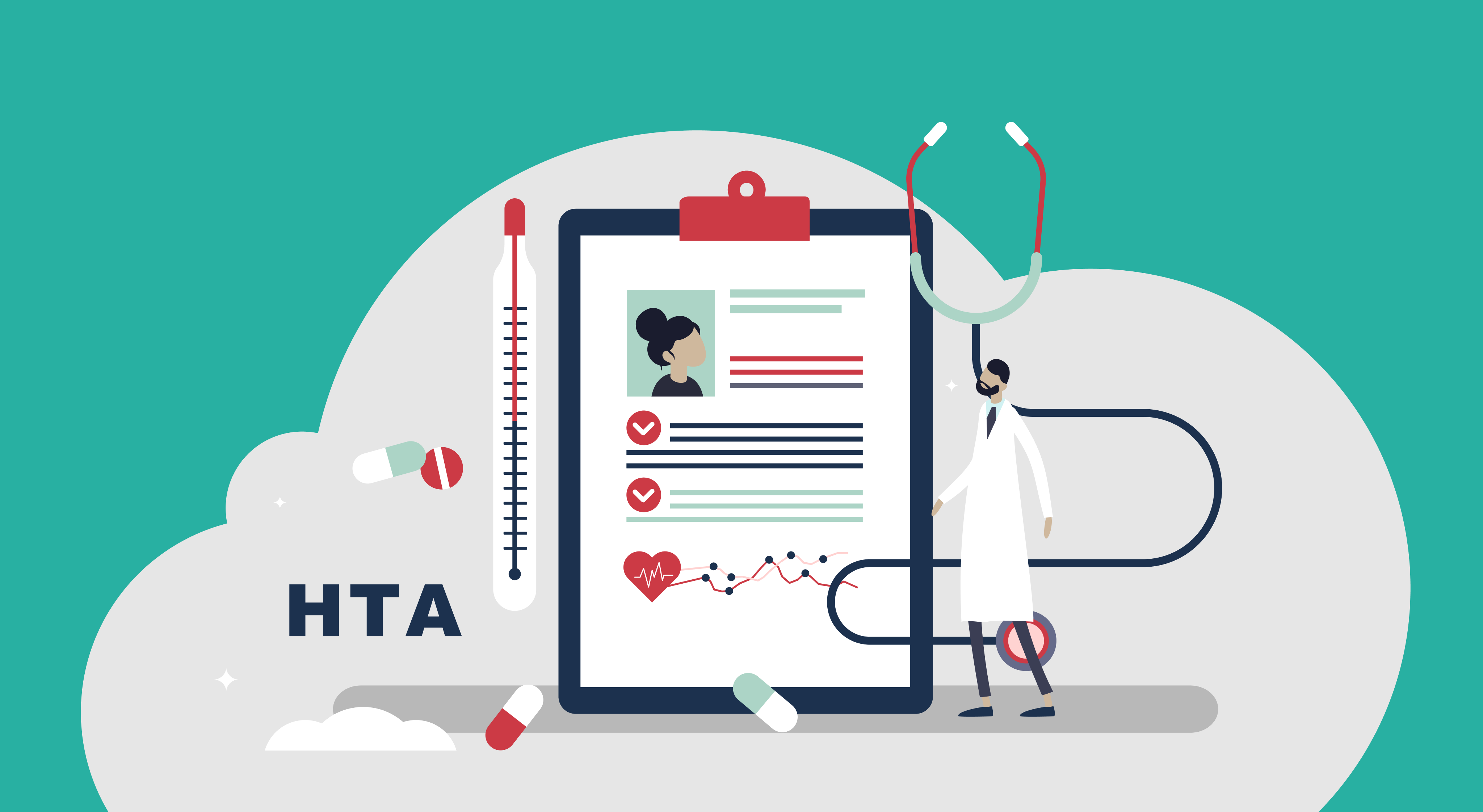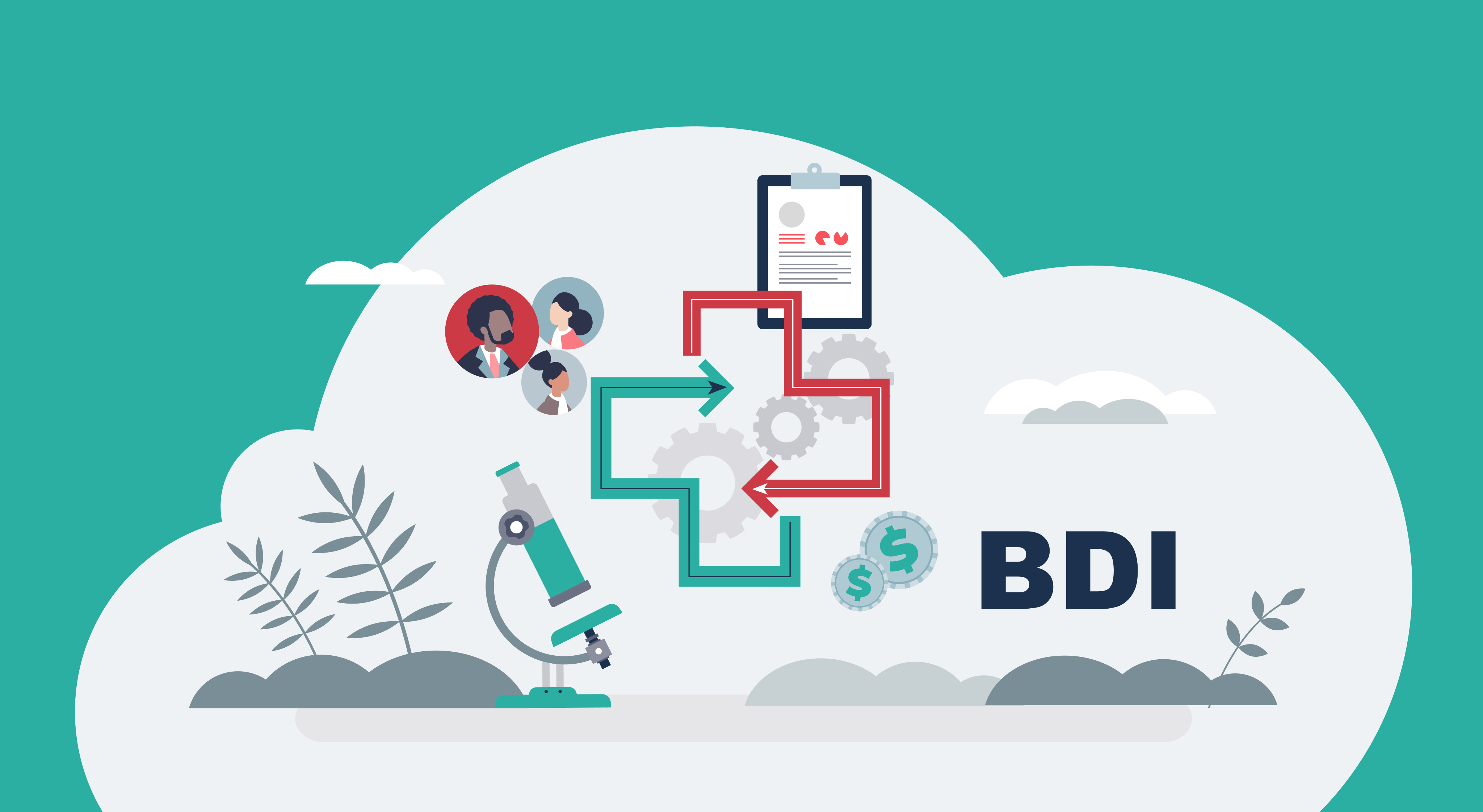What advantage does a new drug offer compared to already established drugs? How effective is it in combating a disease and what is the impact it has on the quality of life induced by the intervention? And beyond that, what role does the drug play in increasing human capital in a country by its impact on patient productivity?
In a world dominated by technological advancements and an increasing debate about scarce resources, the healthcare landscape is continuously evolving to embrace innovative solutions. Health technology assessments (HTAs) are an instrument used to outline the efficacy and cost-effectiveness of new healthcare technologies, while ensuring improvements to patient well-being. In this article, we delve into the traditional assessment of health technologies and how WifOR Institute’s Social Impact model expands upon this approach.
What is Health Technology Assessment?
According to the WHO, health technology assessment is a multidisciplinary process that aims to assess health technologies and formulates standardized guidelines for the international use of these technologies. It is a systematic process that evaluates the social, economic, organizational, and ethical issues of a health intervention or health technology. Health interventions range from medical devices and pharmaceuticals to surgical procedures and healthcare policies.
International differences of Health Technology Assessments (HTAs)
A study conducted by Hofmann et al. (2021) aimed to provide an overview of the various definitions and assessments of innovation in connection with pharmaceuticals in Canada, Japan, Australia, and eight European countries. The research shows that although the therapeutic benefit of a medical product is generally the primary focus of an evaluation, other aspects can also be taken into account, depending on the exact arrangement in each country.
In England, for example, non-health-related aspects that lie outside the healthcare system, such as the reduction of health inequalities within a population, are considered. In Germany, on the other hand, mortality, morbidity, and quality of life are used as primary outcomes in an assessment, while treatment convenience is also considered. However, other crucial aspects that are not related to health, such as political or social effects, are ignored.
In order to address inconsistencies in assessments, the EU HTA regulation establishes uniform guidelines in the European Health Technology Assessment sector – starting from January 2025. The regulation includes setting standards, the improvement of access to innovative therapies in Europe, as well as the reduction of administrative burden and implementation of methods of special therapies. The aim is for health technologies to be assessed efficiently and with high quality across countries while reducing duplication of work.
How are Health Technology Assessment reports used?
HTA reports show the scientific evidence and results of the health technology’s evaluation – presented in a format tailored for decision-makers.
Informed decision-making
The primary goal of HTAs is to equip decision-makers, such as healthcare providers, policymakers, and insurers, with a basis to make informed decisions about the usage and reimbursement of health technologies.
Resource allocation
With finite healthcare resources, prioritizing technologies that offer the best value for money is essential. HTAs assist in optimizing resource allocation by identifying cost-effective interventions.
Care focused on patients
By focusing on patient outcomes and experiences, HTAs seek to ensure that healthcare decisions align with the goal of providing high-quality, patient-centred care.
Continuous improvement
The dynamic nature of healthcare requires ongoing assessment and adaptation. Through regular evaluation, HTAs provide a framework for improving healthcare, fostering innovation, and driving efficiency.
WifOR’s Approach: The Social Impact of health technologies
Health technology assessments focus traditionally on the health benefits of medicines. Primary considerations include potential costs and the impact on patient-reported outcomes, clinical endpoints, and changes in the burden of disease. However, in the recent past various stakeholders recommended to adopt a more inclusive and broader social perspective to better emphasize the overall value of a medical innovation.
To address some of the limitation of traditional health technology assessments, WifOR Institute quantifies the impact of interventions on the overall economy and society, to derive the holistic value of medical innovations. WifOR’s Social Impact measures the value of health innovations from a socio-economic perspective. The Social Impact model provides an evaluation of health innovations and technologies that goes beyond cost-effectiveness by assessing the broader economic and societal value. Drawing on disease-related health outcomes, this approach evaluates the improvements in patients’ health and quality of life due to treatment. Health benefits are subsequently translated into productivity potentials, calculated according to paid and unpaid work activities presented in both hours and monetary values, based on country-specific economic structures.
For example, patients with better health are more likely to return to work, have fewer days of absenteeism and are more productive when they are at work. Furthermore, better health triggers capacity to perform unpaid work activities, such as housework, childcare, supporting relatives, and volunteering. Health improvements also have a positive indirect effect on the lives of those related to the patient, creating greater productive potential. For more information, explore WifOR’s Social Impact.
Study: The Social Impact of early intensified treatment on diabetes
An example of measuring the Social Impact is shown by Tsotra et al. (2022). The Social Impact of early intensified treatment in adult patients with newly diagnosed type 2 diabetes mellitus in Mexico is calculated in comparison to initial monotherapy with subsequent treatment intensification.
Methodology
In the first step, the health effects of the two treatment options are compared. The health effect is calculated as the number of avoided complication events that could have occurred due to type 2 diabetes mellitus (myocardial infarction, stroke, heart failure, nephropathy, and neuropathy) over a 10-year time horizon.
In the second step, the avoided health events are converted into hours of productivity, for both paid and unpaid work. This is based on the contribution of patients to the economy and the degree to which this contribution is impaired due to illness. In the final step, productive hours are monetized using wages. The demonstrated long-term impact of healthcare interventions in monetary terms serve as a standardized measure and basis for decision makers, clinical practitioners, and various relevant stakeholders to appraise patient and economic outcomes.
Results
The health effects lead to 13,000 fewer complications over a 10-year period in patients who received early intensified treatment. This corresponds to a social impact of USD 53.5 million (USD 44.4 million in paid work and USD 9.1 million in unpaid work).
Key Findings
- The Role of Health Technology Assessment in Resource Allocation: HTA provides decision-makers with evidence-based insights into the cost-effectiveness and clinical outcomes of various health interventions, enabling them to allocate resources efficiently and ensure equitable access to quality care. With limited resources and increasing demand for innovative healthcare solutions, prioritizing technologies that offer the highest return in well-being and value creation is imperative.
- Focus on Patient-Centered Care: Health technology assessments enable patient-oriented healthcare by evaluating which innovative health intervention has the greatest beneficial effect for patients. This approach focusing on patients not only enhances the quality of healthcare delivery, but also promotes transparency and accountability in decision-making processes, fostering trust between healthcare providers and patients.
- Interrelation with WifOR’s Social Impact Approach: WifOR’s Social Impact approach complements traditional HTAs by assessing health innovations from a socio-economic perspective. Unlike conventional HTAs that predominantly focus on health benefits and cost-effectiveness, WifOR’s Social Impact model establishes a concept to evaluate healthcare interventions from a broader perspective – assessing the value to the economy and society as a whole.
Conclusion
Health technology assessments serve as a bridge between health research and policymaking, ensuring the efficient adoption and use of healthcare technologies. HTA reports play a vital role in presenting scientific evidence and evaluation in a format tailored for decision-makers in the health care sector, enabling them to prioritize resources effectively and align healthcare decisions with patient-centered care. Moreover, HTAs contribute to continuous improvements in healthcare delivery by promoting innovation and efficiency.
Adding to this, WifOR’s Social Impact approach offers a complementary perspective, emphasizing the broader socio-economic dimensions of health innovations. It introduces a more comprehensive evaluation perspective, going beyond traditional HTAs and can help to inform a broader group of policy makers.
In conclusion, health technology assessments not only help to optimize resource allocation and improve patient outcomes, but also foster a dynamic and responsive healthcare system capable of meeting the evolving needs of patients. As we continue to navigate the complexities of healthcare decision-making, HTAs remain an invaluable tool in shaping a prosperous healthcare future.









